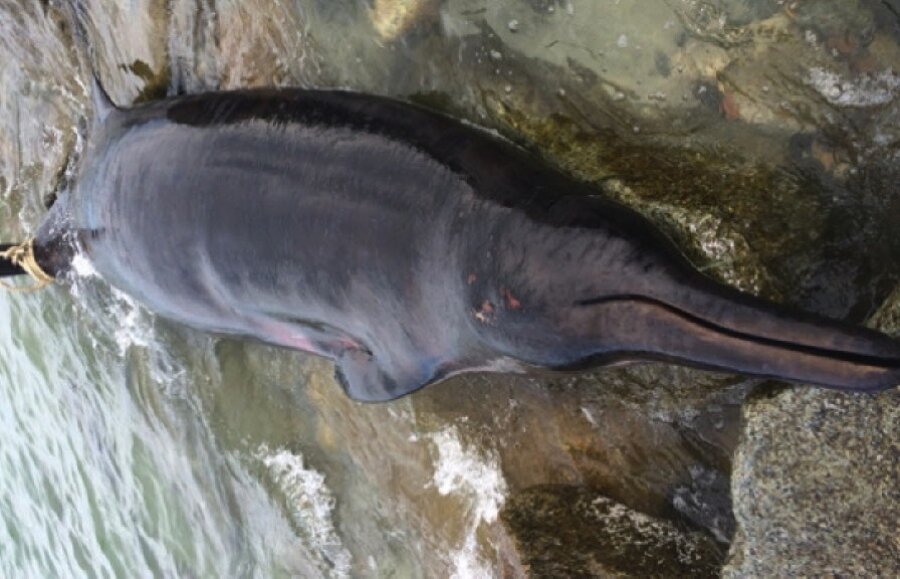What can we learn from the beaked whale discovered in California?
Loading...
A 35-foot Baird’s beaked whale carcass washed up on the beach at Point Reyes National Seashore in California earlier this week, giving scientists the opportunity to study this rare species.
This is the first time The Marine Mammal Center has seen a Baird’s beaked whale in its 41-year history, and the National Marine Fisheries Service historical records state that less than a dozen of the species have ever washed up along the entire West Coast.
"Beaked whales are a very interesting family of toothed whales that mostly live off the continental shelf edge, foraging in deep canyons to feed on squid," Padraig Duignan, chief pathologist at The Marine Mammal Center, told CBS News. "The opportunity to perform a necropsy on such a unique animal that we rarely have the opportunity to examine will help contribute to our baseline data on the species."
Baird's beaked whales, named for the 19th-century naturalist Spencer F. Baird, are the largest of the beaked whale species and are typically found in the north Pacific Ocean at great depths, rarely venturing into shallow waters.
The preliminary necropsy showed evidence that the 35-foot whale most likely collided with a vessel. Additionally, bone samples were collected for further study by researchers at the California Academy of Science.
There are 22 known beaked whale species, members of the family Ziphiidae, and each new whale that washes up on the beach adds to the body of knowledge about this elusive genus that dives to depths of 1,600 to 9,000 feet to search for food.
A beaked whale from the Bering Sea that washed up on the shore in Alaska in June 2014 was originally thought to be a juvenile Baird's beaked whale, until further research determined that it may be a previously undiscovered beaked whale species, one that matches the descriptions of "raven whales" seen by Japanese whalers, reported The Christian Science Monitor.
"As much as we know about the genetic heritage of this animal, we still do not know very much about the animal itself," Phillip Morin, a lead author on the study that determined that the Alaska whale was a new species, told Environmental News Service. "We can draw some indications from what we know about other beaked whales in terms of its range and behavior, but we still have many more questions than answers."
Material from the Associated Press was used in this report.






